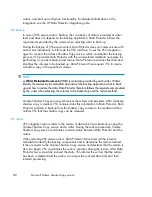
1.
Put the database into a consistent mode that permits a snapshot to be taken.
2.
Perform a snapshot of the application data.
3.
Return the database to normal operating mode.
This configuration enables an offline backup of a very large database in a short time,
as well as an online backup that creates very few archive log files, since the backup
mode time of the database is kept to a minimum.
The small number of archive logs reduces the space needed for the archive logs in
total, as well as speeding up the recovery process of the database. After a restore
of an online database, a recovery is needed to return the database to a consistent
state. All archive logs that have been created during the backup must be applied.
In a snapshot backup, only the archive log files created during the snapshot are
applied.
Other supported configurations
Figure 84 Multiple disk arrays - dual host
With this solution, both hosts are connected to multiple disk arrays. The I/O
infrastructure of the RAID systems is shared between the application client and the
backup client.
Snapshot concepts
282
Summary of Contents for B6960-96035
Page 17: ...Overview of backup and automated media copy sessions 340 105 Concepts guide 17 ...
Page 20: ...20 ...
Page 22: ...Publication history 22 ...
Page 132: ...Planning your backup strategy 132 ...
Page 182: ...Media management and devices 182 ...
Page 186: ...Users and user groups 186 ...
Page 204: ...The Data Protector internal database 204 ...
Page 218: ...Figure 62 Direct SIP integration example Service management 218 ...
Page 242: ...Integration with database applications 242 ...
Page 264: ...Synthetic backup 264 ...
Page 274: ...Split mirror concepts 274 ...
Page 288: ...Snapshot concepts 288 ...
Page 344: ...Further information 344 ...
Page 402: ...Glossary 402 ...






























